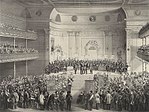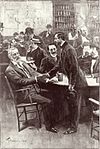Coles Sports and Recreation Center

The Coles Sports and Recreation Center was the main athletic facility at New York University, located at 181 Mercer Street in New York City, in the U.S. state of New York. The building was named in honor of Jerome S. Coles, an alumnus and benefactor of NYU. The facilities accommodated a wide range of individual and group recreational sports and fitness activities, including over 130 different courses at various skill levels serving 10,000 participants, as well as club sports and an intramural program enjoyed by approximately 3,500 students. Coles was renovated with a new dehumidifcation system in 1999 to solve problems of corrosion.Up to 3,000 members used the facility daily, while 1,900 spectators could be seated in the fieldhouse bleachers and 230 could be seated in the natatorium bleachers. The Coles Sports Center was barrier-free and accessible to physically challenged persons. Coles was also the home to most of New York University's NCAA Division III intercollegiate teams. Some teams that competed in the facility include: men's and women's basketball, diving, swimming, volleyball, and men's wrestling. The fencing team also used Coles facilities, but participated in NCAA Division I. Club sports housed at Coles Sports and Recreation Center included badminton, cheerleading, martial arts, squash, racquetball, baseball, and waterpolo. Coles was closed in February 2016, and will be demolished as part of the NYU 2031 plan.
Excerpt from the Wikipedia article Coles Sports and Recreation Center (License: CC BY-SA 3.0, Authors, Images).Coles Sports and Recreation Center
Washington Square North, New York Manhattan
Geographical coordinates (GPS) Address Nearby Places Show on map
Geographical coordinates (GPS)
| Latitude | Longitude |
|---|---|
| N 40.72656 ° | E -73.99749 ° |
Address
New York University
Washington Square North
10012 New York, Manhattan
New York, United States
Open on Google Maps







